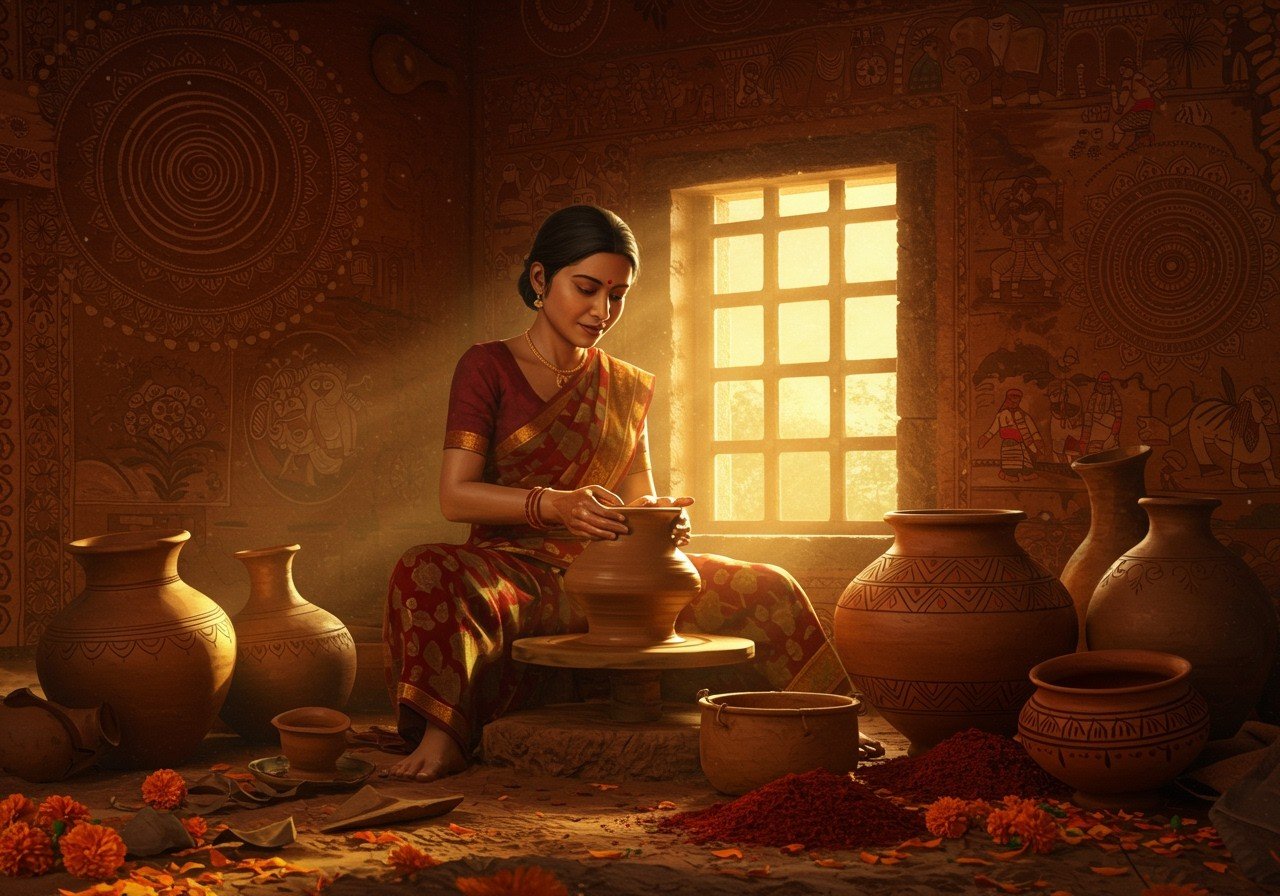
The Jorwe culture, an ancient Indian civilization, is renowned for its unique pottery. Examining these artifacts unveils the lifestyle, beliefs, and practices of the Jorwe people, offering valuable insights into their daily routines and rituals. Ancient Indian pottery boasts a rich history, with evidence found in early settlements like Lahuradewa (dating back to 7000 BCE) and the Indus Valley Civilization (c. 3300-1300 BCE), including sites like Mehargarh. Pottery has played a crucial role in Indian culture, providing valuable insights into the past and aiding in its reconstruction, much like the Jorwe pottery reveals about its people. The Painted Grey Ware pottery from the Vedic period (1000-600 BC) stands as a testament to the artistry and skill of ancient Indian potters.
Origins and Historical Context
Flourishing during the Chalcolithic period in India (circa 1400-700 BCE), primarily across Maharashtra, the Jorwe culture left its mark through settlements and burial sites. These archaeological discoveries, with pottery as a central element, allow us to piece together the socio-economic and cultural landscape of the time. Pottery styles and techniques have continuously evolved throughout Indian history, mirroring the distinct cultural shifts and advancements of each era. This rich tradition continues to thrive today, with diverse types and styles practiced and showcased in bustling markets like Dilli Haat in New Delhi.
Characteristics of Jorwe Pottery
Several distinct features characterize Jorwe pottery:
- Shapes and Sizes: Bowls, jars, and dishes are the most common forms, each serving specific purposes within their daily lives. These shapes also hint at the culinary practices and food storage methods of the Jorwe people.
- Materials and Techniques: Predominantly crafted from red and black ware, the pottery showcases the Jorwe people’s mastery of these techniques. The choice of materials and techniques likely reflects the available resources and the level of technological advancement during that period.
- Decorative Elements: Geometric patterns and motifs adorn the pottery, revealing the aesthetic sensibilities of the Jorwe people. These artistic expressions offer a glimpse into their symbolic language and belief systems.
These characteristics reflect both the aesthetic sensibilities and the technological capabilities of the Jorwe people.
Cultural Significance
Pottery was deeply intertwined with the daily life and rituals of the Jorwe civilization:
- Usage: Essential for storage, cooking, and serving food, pottery played a practical role in daily life. The variety of shapes and sizes suggests diverse culinary practices and food storage needs.
- Symbolic Meanings: Certain shapes and designs held symbolic meanings, possibly linked to religious beliefs or social status. This symbolism adds another layer of complexity to the understanding of Jorwe culture.
- Burial Practices: The presence of pottery in burial sites suggests its significance in funerary rituals and beliefs about the afterlife. This practice sheds light on the spiritual world of the Jorwe people.
- Trade: Pottery styles and materials provide evidence of trade with other cultures, indicating interaction and exchange of ideas. This trade network highlights the interconnectedness of ancient civilizations.
Archaeological Discoveries
Key sites like Nevasa, Daimabad, and Inamgaon have yielded significant Jorwe pottery finds. Archaeologists employ various methods to excavate and analyze these artifacts, revealing valuable information about the culture’s chronology and evolution.
Modern Relevance
The legacy of Jorwe pottery continues to resonate in contemporary Indian art and craft:
- Revival: Modern artisans are reviving traditional pottery techniques, ensuring the survival of this ancient craft. This revival keeps the artistic heritage of the Jorwe people alive.
- Educational Programs: Pottery serves as a valuable tool in educational and cultural programs, connecting people to their heritage. These programs foster an appreciation for the skills and artistry of the past.
- Museums and Exhibitions: Displaying artifacts in museums educates the public about the Jorwe culture and its significance. These exhibitions offer a tangible link to the past.
- Cultural Heritage: Preserving Jorwe pottery is essential for safeguarding cultural heritage and identity. This preservation ensures that future generations can learn from and appreciate their ancestors.
- Modern Products: Traditional Jorwe designs find their way into modern products, demonstrating the enduring appeal of these ancient patterns. This adaptation bridges the gap between the past and the present.
Modern Clay Pottery for Traditional Living
Poojn.in, India’s largest cultural goods store, offers authentic clay pottery reminiscent of India’s rich pottery heritage, including influences from cultures like the Jorwe. Our handcrafted clay pots, such as the 10-inch Clay Patil with Dhakkan (₹359), blend traditional craftsmanship with modern functionality. These pots, adorned with classic designs similar to ancient pottery patterns, are perfect for both ritualistic practices and everyday cooking.
For a complete traditional dining experience, explore our Clay Dinner Set, featuring a 12-inch thali, 5 serving bowls, and 2 glasses. These items reflect the enduring importance of clay pottery in Indian culture, bridging the gap between ancient traditions and contemporary lifestyles.
Our clay products allow you to embrace traditional pottery practices while enjoying the convenience of online shopping. Discover our extensive collection of clay items at Poojn.in, where historical significance meets modern utility.
Conclusion
Exploring Jorwe culture through its pottery offers a captivating journey into India’s rich past. These artifacts provide a tangible connection to the lives and traditions of our ancestors. By preserving and studying Jorwe pottery, we honor their legacy and ensure its continuity for generations to come. This cultural treasure not only enriches our understanding of history but also inspires contemporary artists and educators. As we continue to explore and protect these artifacts, we deepen our appreciation for India’s vibrant and diverse heritage.


